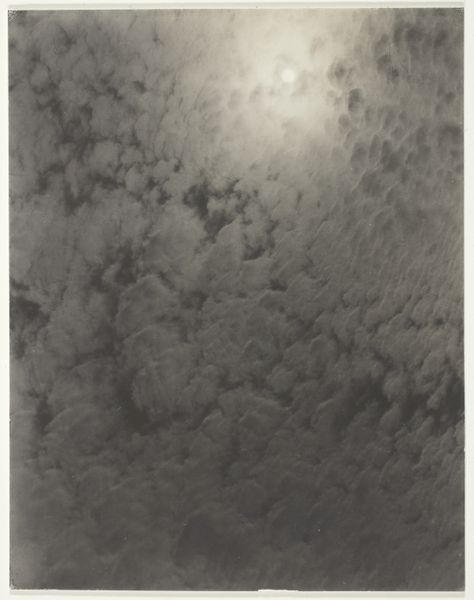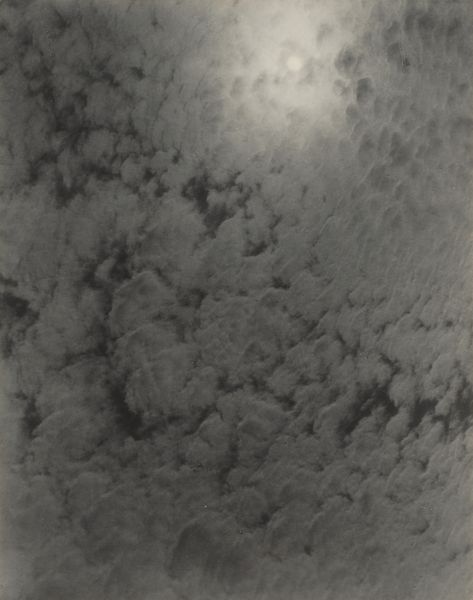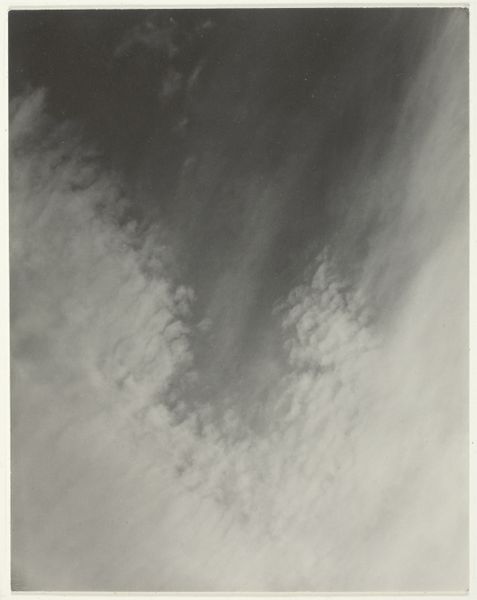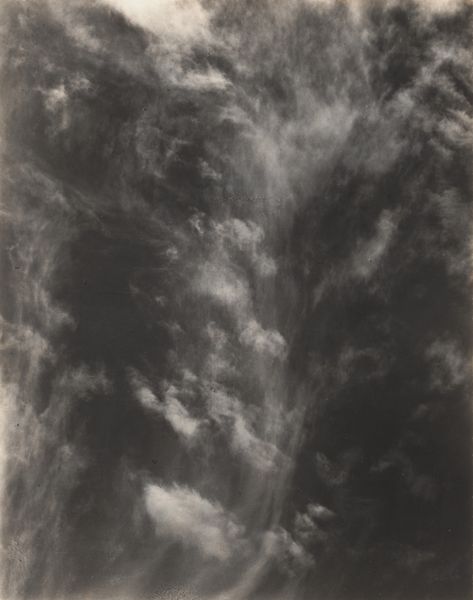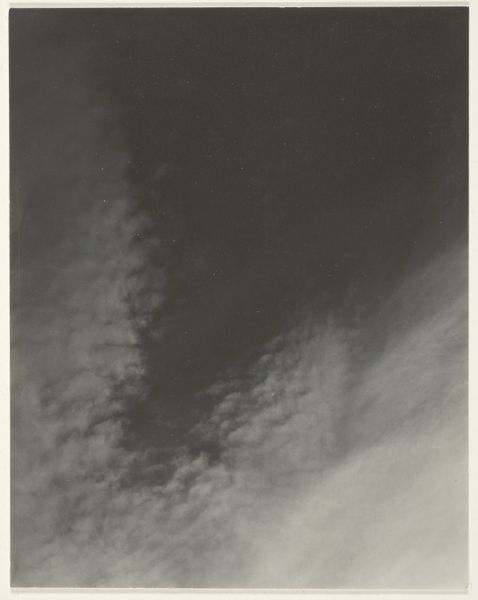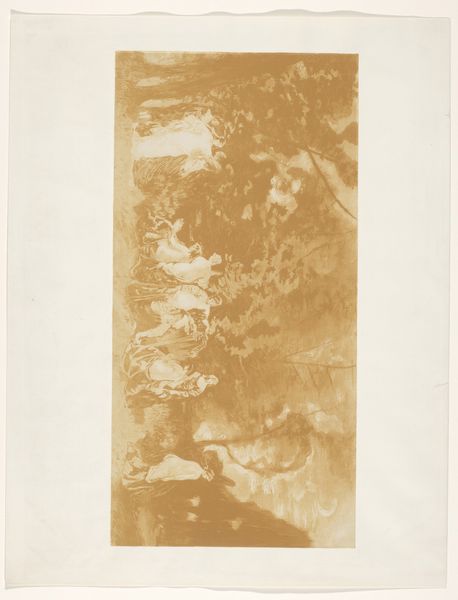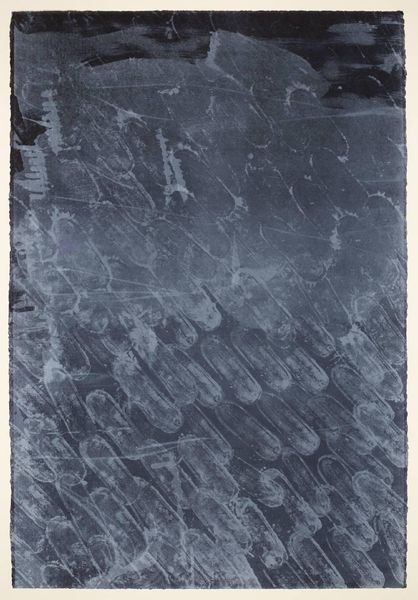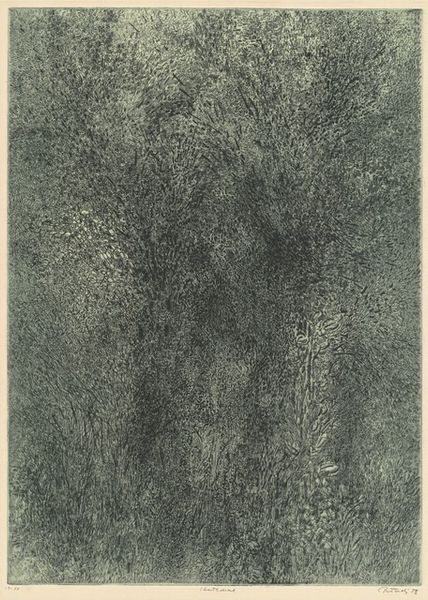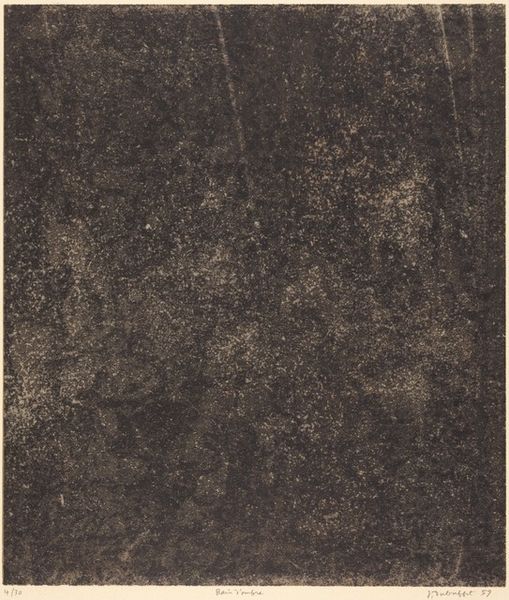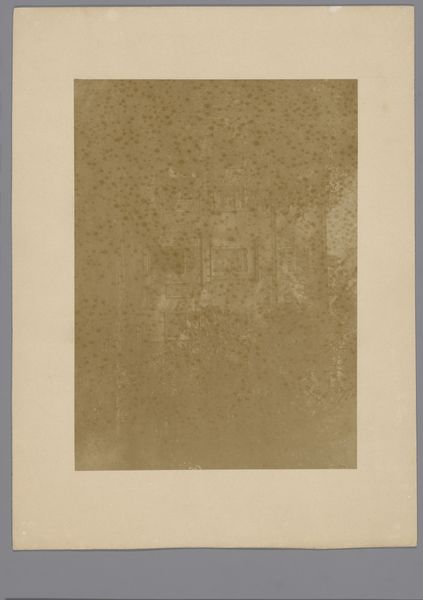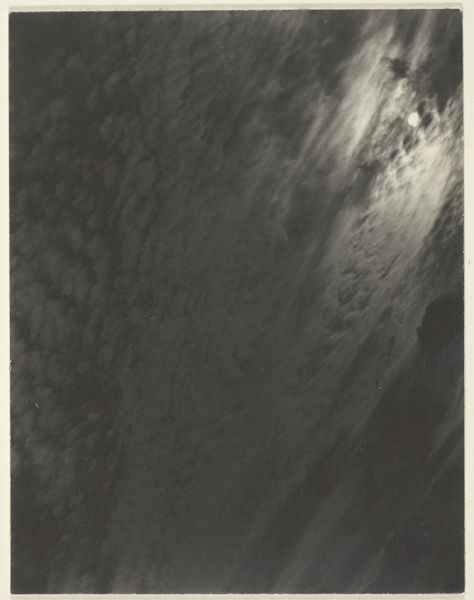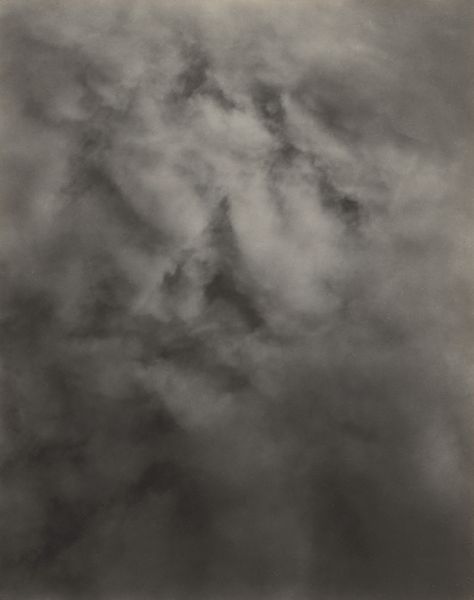
silver, paper, photography, gelatin-silver-print
#
silver
#
landscape
#
paper
#
photography
#
gelatin-silver-print
#
abstraction
#
united-states
#
modernism
Dimensions: 11.9 × 9.2 cm (image/paper/first mount); 34.8 × 27.4 cm (mount)
Copyright: Public Domain
Editor: So, this is Alfred Stieglitz’s "Equivalent," a gelatin-silver print from 1929. It strikes me as surprisingly abstract; you can barely make out that it is a cloudscape, if you didn’t know it already. What do you see in this piece? Curator: I see a deliberate move away from representation and toward feeling. Stieglitz, deeply engaged with the avant-garde, aimed to equate the photograph with inner emotional states, specifically around modernism and its effects on US culture. How do the clouds function for him, and for us as viewers today? Can landscape become an abstraction of the self? Editor: It's interesting to consider them as representing internal states. I suppose the dark, moody tones could suggest turmoil, but that feels like a very literal reading. How does the social context of the 1920s inform your view? Curator: The 1920s were a time of immense social change in the United States – think about the Harlem Renaissance, the rise of consumer culture, and, of course, the aftermath of World War I. Photography like this moved away from simply capturing a beautiful scene and explored how we experience the world. The use of "Equivalent" then shifts the agency to you, how *you* equate your own emotions through experiencing them reflected in the image. What do the clouds *do* to *you*? Editor: That's helpful. I see now it's less about *Stieglitz's* specific emotions, and more about a universal visual language for processing feelings within the context of a rapidly changing world. I appreciate the prompt to look inward and draw meaning to my own personal intersectional experience, filtered and influenced through history. Curator: Precisely! And considering Stieglitz’s politics on race and gender at that time adds layers to what you may experience, how art is viewed. I am grateful for your perspectives here, for it further refines our contemporary view of this timeless piece.
Comments
No comments
Be the first to comment and join the conversation on the ultimate creative platform.
